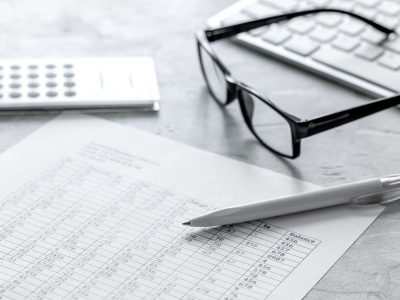
They are primarily used to account for the depreciation, depletion, or obsolescence of the company’s assets, which helps to present a more accurate financial position. For instance, cash flow Accumulated Depreciation is a contra asset account that shows the cumulative depreciation of physical assets like machinery and equipment. Over time, these assets lose value due to wear and tear, and the accumulated depreciation account records this decline in value. The connection between contra-assets and the income statement is primarily through the periodic expense recognized, such as depreciation or amortization, which affects net income. For example, the depreciation expense recorded is a result of reducing the book value of fixed assets, and it is reported as an expense in the income statement every accounting period.
Free Course: Understanding Financial Statements

Accumulated depreciation affects financial ratios such as return on assets (ROA) and asset turnover ratio, which are used to assess a company’s performance. Contra accounts are categorized based on the type of account they offset, creating a structured approach to financial adjustments. In addition, there is another technique called the double-declining balance method that allows for an asset to be depreciated even faster, based on its straight-line depreciation amount multiplied by 200%.
What Are Depreciation Expenses?
- To see how the calculations work, let’s use the earlier example of the company that buys equipment for $25,000, sets the salvage value at $2,000 and the useful life at five years.
- If the company decides to sell, the lower net book value of the vehicles due to the contra asset account will be a factor in determining the company’s overall valuation.
- Depreciation expense is the annual allocation of an asset’s cost, recorded on the income statement.
- A company receives rebates for advertising it does on behalf of brands it carries in its stores.
- Instead of increasing assets or decreasing liabilities (as would be typical when spending cash), buying treasury stock reduces shareholders’ equity.
This is essential for stakeholders evaluating asset utilization and investment returns. For example, the Modified Accelerated Cost Recovery System (MACRS) in the U.S. allows accelerated depreciation, Medical Billing Process providing tax benefits in an asset’s early years. Companies often align financial reporting with tax strategies to optimize cash flow and liabilities. Accumulated depreciation directly reflects the diminishing value of tangible assets, such as buildings, machinery, and vehicles, which have a finite useful life.
Double Declining Balance Method
To illustrate, let’s consider a delivery truck purchased by a company for $50,000 with an expected lifespan of 5 years and a residual value of $5,000. Using the straight-line method, the annual depreciation expense would be $9,000 (($50,000 – $5,000) / 5 years). After 3 years, the accumulated depreciation would be $27,000, and the book value of the truck would be $23,000 ($50,000 – $27,000). Net book value (NBV) measures an asset’s worth after accounting for depreciation. As accumulated depreciation grows, it reduces NBV, offering a realistic view of an asset’s current economic value.
- Accumulated depreciation is recorded in a contra account as a credit, reducing the value of fixed assets.
- Calculating and estimating allowances are crucial steps in financial reporting to ensure that a company’s balance sheet reflects accurate values for its assets.
- In this article, we’ll discuss whether accumulated depreciation is an asset and why it’s critical to record on your balance sheet or income statement.
- When depreciation is initially recorded as an expense on the company’s balance sheet, the accumulated depreciation is recorded as a credit to offset that expense.
- For example, the discount on bonds payable reduces the carrying value of bonds, reflecting the true cost of borrowing.
- The netbook value of the machinery by the end of the first year will be $80,000 ($100,000-$20,000) and $60,000 ($100,000-$40,000) by the end of the second year.
- We get the remaining value of assets by deducting the accumulated depreciation balances from the book value of the asset.
- Each of these methods offers a different perspective on how an asset’s value declines over time, and the choice of method can significantly affect a company’s financial statements.
- This practice adheres to the matching principle, which requires expenses to be recorded in the same period as the related revenues.
- Explore the role of contra accounts in financial management and learn how they impact financial statements and accounting practices.
- For example, a grocery store displays advertisements for a national brand in its weekly flyer.
Sales returns and allowances is a contra revenue account that is used to offset the balance of the sales revenue account. It represents the amount of sales that are expected to be returned or refunded to customers. The purpose of this account is to reduce the net sales on the income statement. There are several types of contra accounts, including accumulated depreciation, allowance for doubtful accounts, and sales returns and allowances. Each type of contra account represents a different aspect of a company’s financial position. As the asset gets older and experiences more wear and tear, the recorded value of the asset will gradually get lower, while the contra asset’s value will gradually get higher.

But when these assets inevitably experience wear and tear, they decline in value and eventually require replacement. The process of calculating this wear and tear is called depreciation, and the sum of an asset’s depreciation over multiple accounting periods is called accumulated depreciation. So, when it comes time to record this value on your balance sheet, is accumulated depreciation an asset or a liability?

That means it has a negative balance compared to its corresponding fixed asset account. Asset accounts have a natural debit balance, so accumulated depreciation has a natural credit balance. It works to offset and lower the net value of the related fixed asset account.
The Allowance for Doubtful Accounts is used to track the estimated bad debts a company my incur without impacting the balance in its related account, Accounts Receivable. An estimate of bad debts is made to ensure the balance in the Accounts Receivable account represents the real value of the account. Allowance for Doubtful Accounts pairs with the Bad Debts Expense account when doing adjusting journal entries. Learn how to build, read, and use financial statements for your business so you can make more informed decisions.
- This depreciation is recorded in a contra asset account, which accumulates over time and is deducted from the original cost of the machinery on the balance sheet.
- This account is paired with and offsets the fixed assets line item in the balance sheet, and so reduces the reported amount of fixed assets.
- Allowance for Doubtful Accounts pairs with the Bad Debts Expense account when doing adjusting journal entries.
- A Contra Asset Account is an asset account having a credit balance that is related to one of the assets with a debit balance.
Accumulated Depreciation vs. Depreciation Expense vs. Book Value

The balance sheet presentation of fixed assets, thus, includes their historical cost followed by the accumulated depreciation to arrive at the net book value. The future of contra asset accounting is poised to evolve in tandem with the advancements in technology and changes in regulatory frameworks. As businesses continue to seek efficiency and transparency in financial reporting, the role of contra asset accounts, particularly in the context of accumulated depreciation, will become even more critical. These accounts serve as a testament to a company’s investment in its assets and its commitment to maintaining the accuracy of its financial statements. Accumulated depreciation is a critical concept in accounting, representing the total amount of depreciation expense that has been recorded against a fixed asset since it was put into use. It is a contra asset account, meaning contra asset account it has a credit balance and is used to offset the value of the asset it relates to on the balance sheet.
Leave a Reply